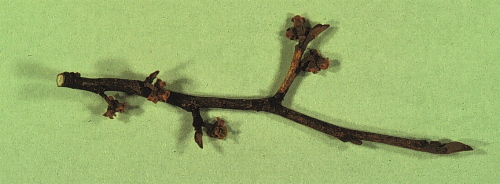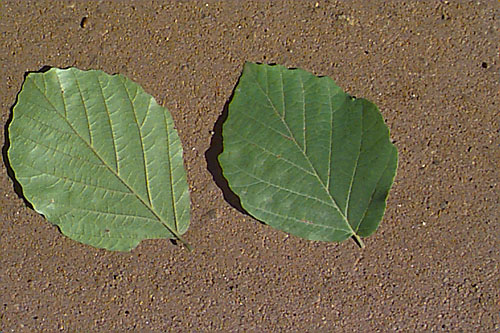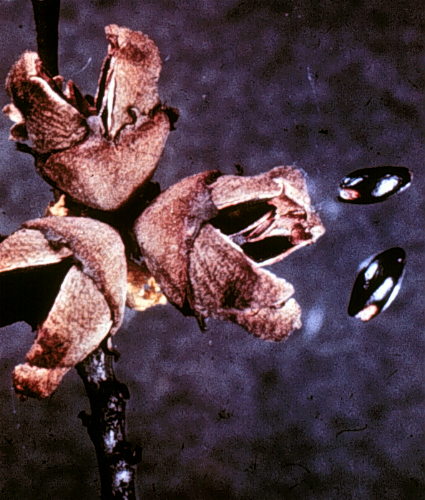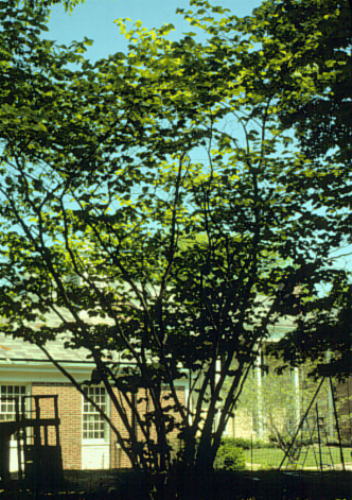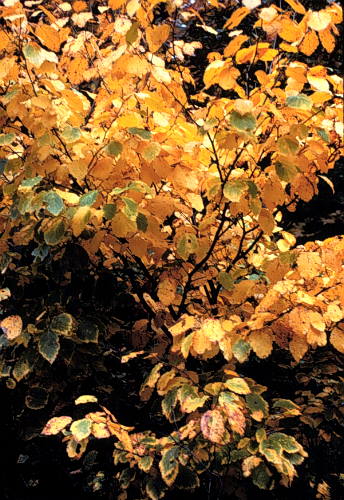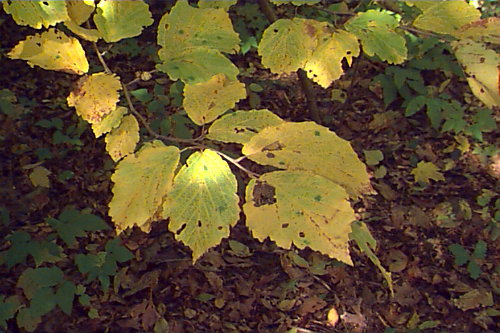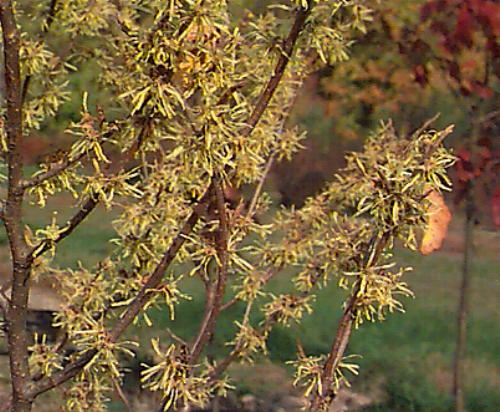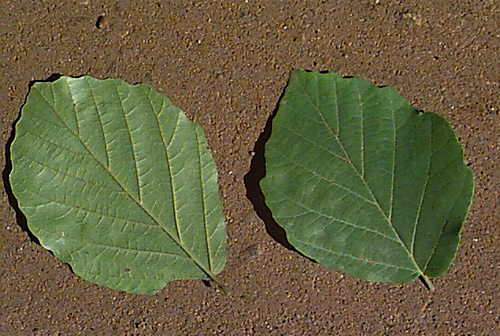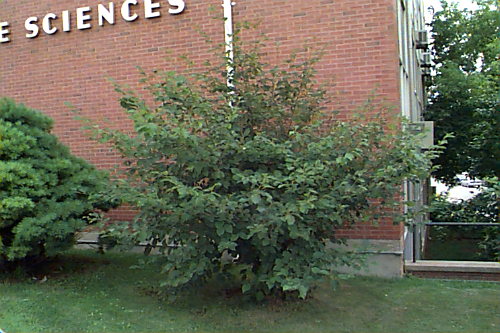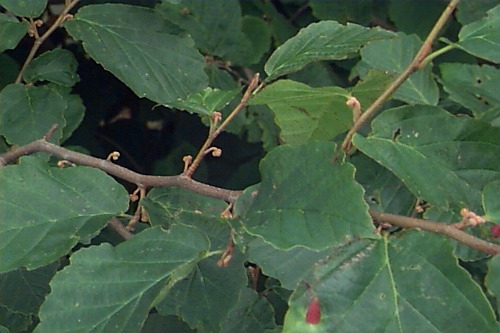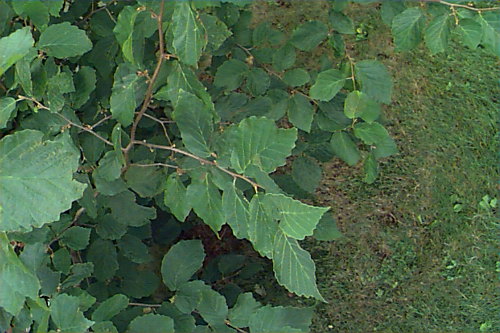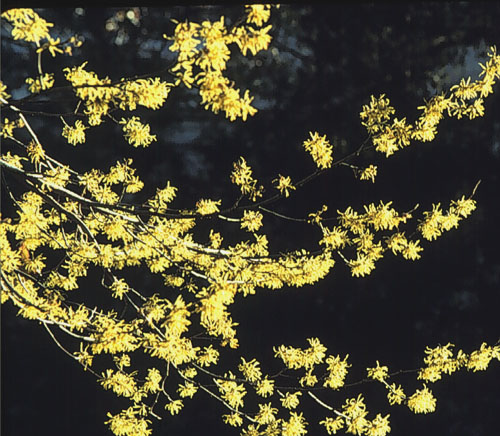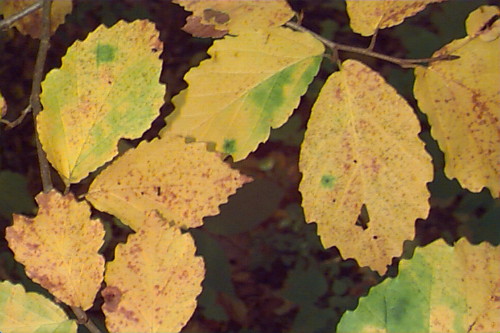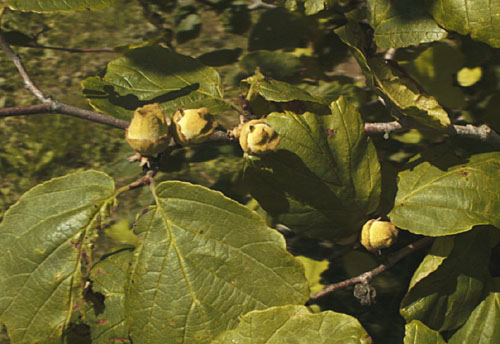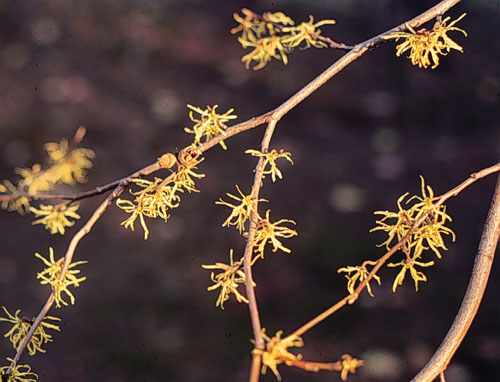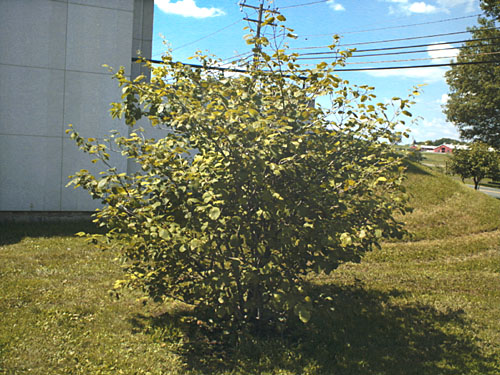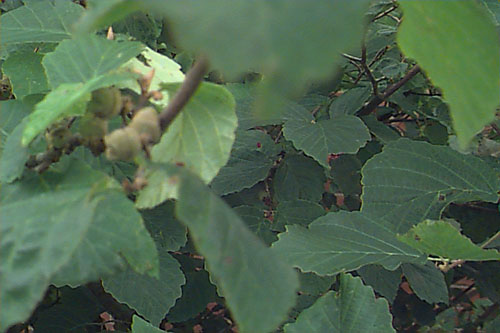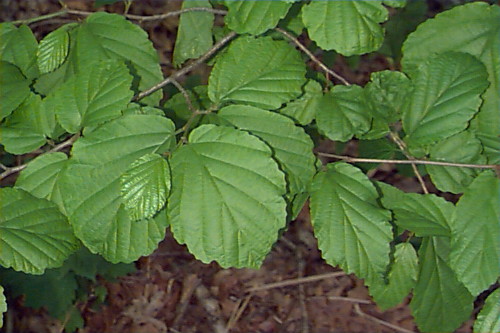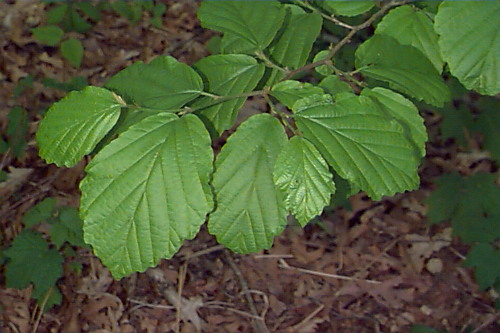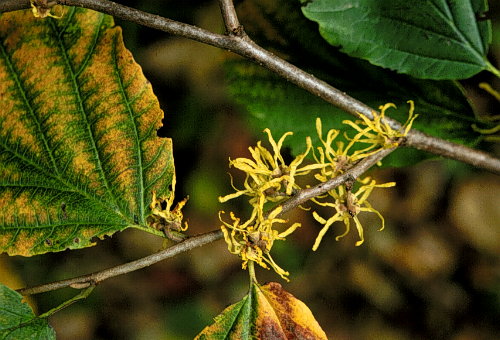Hamamelis virginiana
Common Witchhazel
Hamamelidaceae
ExpandHabitat
- native to eastern and central United States
- zone 4, possibly 3
- an understory small tree or shrub of deciduous forests
Habit and Form
- a deciduous small tree or large shrub
- 10' to 15' tall in most instances
- can reach 30' tall
- nearly as wide as tall
- develops an irregular, but rounded outline
- loose an somewhat open, but attractive
- multi-stemmed
Summer Foliage
- alternate, simple leaves
- obovate to elliptical with uneven base
- leaves are 3" to 6" long; 2" to 3.5" wide
- margins of leaves are coarsely toothed
- bright to dark green
- clean and attractive
- new leaves emerge reddish-bronze
Autumn Foliage
- clear yellow
- often quite showy
Flowers
- spider-like with 4 narrow, crinkled petals
- yellow
- light, spicy fragrance
- the last woody plant to flower
- bloom time is October and November after foliage drop
Fruit
- 0.5" long capsule
- capsules take 1 year to mature
- seeds are expelled explosively from the capsules in fall
Bark
- smooth gray to gray brown
Culture
- full sun to partial shade
- prefers a moist, cool, acidic soil
- somewhat pollution tolerant
Landscape Use
- borders
- naturalistic areas
- for late fall bloom effect and fragrance
- shady areas
- for fall color of foliage
Liabilities
- horned gall on foliage caused by an eriopyid aphid
- relatively trouble-free
ID Features
- fall bloom
- yellow spider-like flowers
- naked buds
- buds and twigs densely pubescent
- flower buds not present
- uneven leaf at base
Propagation
- by seed
- cuttings are difficult
- can be grafted for vegetative propagation
Cultivars/Varieties
There are currently no commercial selections of this fine hardy native, but reports indicate that some forms may be introduced that drop their foliage before the initiation of flowering in fall.
